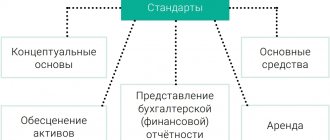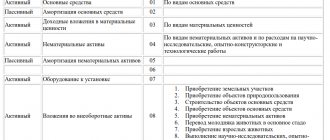We justify the need to purchase books and printed publications
To begin with, it is important to determine how books, magazines and other printed publications are related to your production activities.
For example, the following costs can be considered quite reasonable:
- for magazines (newspapers) and books on accounting and taxes, for example, the “General Ledger” magazine, since the accountant needs them for proper accounting;
- books on management, as they are needed for better personnel management;
- a collection of building standards if the company is engaged in construction;
- “Rossiyskaya Gazeta”, since it publishes laws and regulations;
- glossy magazines (for example, “Vogue”, “Cosmopolitan”, “Shape”, etc.) in a situation where your clients are forced to sit waiting for their turn (for example, in hairdressers, beauty salons);
- second-hand books on jurisprudence, if your profile is legal services;
- other literature, which is “informational” support necessary for conducting activities.
It will be very problematic to prove that you need publications for work that were purchased to create the interior of an office or to be placed in the director’s office in order to create a certain image of the company, for example:
- series of books “The Lives of Remarkable People”;
- Russian and foreign classics;
- Encyclopedia of Arts;
- beautiful art albums.
EXPLAIN TO YOUR MANAGER
It is better to purchase books and magazines that are in no way related to the company’s activities using net profit. Otherwise, during the audit, the tax authorities will most likely remove from expenses the costs of non-productive literature, and will charge additional taxes, as well as penalties and fines.
This also applies to subscriptions to non-production publications, for example to the Argumenty i Fakty newspaper.
If it is difficult to justify the need to purchase any literature, then it should be taken into account as follows.
In accounting, such literature cannot be taken into account either as fixed assets or as inventories. The most correct thing would be to attribute its cost (together with VAT) to other expenses and reflect it on account 91 “Other income and expenses”, subaccount 91-2 “Other expenses”.
When calculating income tax, the costs of purchasing such non-production literature cannot be taken into account.
It will also not be possible to accept VAT for deduction, since one of the mandatory conditions for applying the deduction is not met: the literature will not be used in activities subject to VAT.
This accounting method is the most secure. If you decide to take into account the costs of such literature when calculating your income tax and deduct VAT on it, the tax authorities are unlikely to agree with you. In particular, they always considered the costs of interior items purchased for the office to be unreasonable. You will have to prove your case in court, but the court may take your side. For example, when considering a case on the validity of the costs of maintaining aquariums, the court sided with the taxpayer, indicating that the costs were aimed at creating a favorable environment. There is also a decision in which the court recognized production costs for interior items, since they are aimed at creating a favorable impression on external visitors.
Now let's look at the procedure for accounting for literature that can be classified as production.
We take into account subscriptions to periodicals
Some accountants charge subscription fees as a deferred expense in accounting. But it's not right. The amount paid for the subscription is an advance and is reflected in the debit of account 60 “Settlements with suppliers and contractors”.
Having received the next issue of a magazine or newspaper, based on primary documents, we take into account its cost in account 10 “Materials” (debit account 10 - credit account 60) and immediately write it off as expenses for ordinary activities (debit account 20 (26) - credit account 10) . When subscribing to electronic publications, having received an invoice and a statement, we write off the cost of the subscription directly to expenses, bypassing the 10th invoice.
When calculating income tax, expenses for professional publications are included in other expenses related to production and sales. At the same time, for tax purposes, you can count as expenses a subscription to several printed publications on the same topic at the same time.
VAT on subscription is deductible in the following order.
STEP 1. When we receive an advance invoice from the publisher with the allocated amount of VAT, we accept it for deduction.
STEP 2. Upon receipt of an invoice for numbers already supplied (basically they are included in each number):
- we accept VAT for a specific publication number for deduction;
- At the same time, we restore the same amount of VAT accepted for deduction on the advance invoice.
For daily newspapers, as a rule, one invoice is issued, for example for a month or a quarter.
How to take into account an electronic catalog
Please tell me how to register an electronic catalog (directory) of spare parts for automobile equipment, which we purchased from a third-party organization for 50,000 rubles, which developed it and sold it to us as its own product.
What is this? Fixed asset, materials or deferred expenses?
The answer to your question will depend on whether the electronic catalog was developed individually according to your order, or whether a third-party organization sold you one of the copies of the electronic catalog on the basis of a license agreement.
Most likely, in your case we are talking about the second option, so let’s look at it in more detail.
An electronic catalog is essentially a computer program or a database.
From the point of view of civil law, computer programs and databases are different concepts, but for tax and accounting purposes these differences do not matter, since both programs and databases are accounted for in the same way.
Therefore, we will not go into details of civil regulation of computer programs and databases.
The only important thing for us is that both computer programs and databases are objects of copyright and are subject to legal protection as works of literature ( Articles 1260, 1261 of the Civil Code of the Russian Federation
).
Their creators (unless the program or database was created to order) have exclusive rights
to these computer programs or databases.
Your organization receives non-exclusive rights
to use a copy of such a computer program or database.
Non-exclusive rights are transferred under the license agreement.
According to Art. 1286 Civil Code of the Russian Federation
under a license agreement, one party - the author or other copyright holder (
the licensor
, in your case - this is the company that sold your organization a copy of the electronic catalog) grants or undertakes to provide the other party (
the licensee
, in your case the licensee is your organization) the right to use this work in the established within the limits of the agreement.
The license agreement is concluded in writing.
an exception has been made for license agreements granting the right to use a computer program or database.
.
They can be concluded by each user with the corresponding copyright holder through an agreement of adhesion
, the terms of which are set out on the purchased copy of such a program or database or on the packaging of this copy.
Simply put, for example, on a disk with a program or database, the conditions for using the program or database can be described. Thus, the copyright holder of the program or database offers to conclude a license agreement on the specified conditions.
And if the person who bought such a disk begins to use the program or database, this means his consent to enter into an agreement.
Accounting for such costs is regulated by PBU 14/2007 “Accounting for intangible assets”
, approved by order of the Ministry of Finance of the Russian Federation dated December 27, 2007 No. 153n.
For the copyright holder (the company that sold your organization a copy of the electronic catalogue), this catalog is an intangible asset.
You, as a licensee, receive such an intangible asset for use
.
According to clause 39 of PBU 14/2007
intangible assets received for use are accounted for by the user (licensee)
on an off-balance sheet account
in an assessment determined based on the amount of remuneration established in the agreement.
Instructions for the use of the Chart of Accounts, approved by Order of the Ministry of Finance of the Russian Federation dated October 31, 2000 No. 94n, do not provide for a special off-balance sheet account for accounting for intangible assets received for use.
An organization can enter an off-balance sheet account into its working chart of accounts for these purposes, for example 012
"Intangible assets received for use."
Payments for the granted right to use the results of intellectual activity or means of individualization, made in the form of periodic payments
, calculated and paid in the manner and within the terms established by the agreement, are included by the user (licensee)
in the expenses of the reporting period
.
Payments for the granted right to use the results of intellectual activity or means of individualization, made in the form of a fixed one-time payment
, are reflected in the accounting records of the user (licensee) as
deferred expenses
and are subject to write-off
during the term of the agreement
.
In your case, a fixed one-time payment was made.
Depending on the purposes for which your organization will use the electronic catalog, expenses may be written off to accounts 20, 25, 26, 44.
Let's assume that the electronic catalog will be used in the main production activities.
In this case, expenses will be charged to account 20 “Main production”.
You did not indicate the validity period of the contract in the question, but it may also be that this period was not agreed upon by the parties at all.
In this case, it is advisable to establish the expected period of use of the electronic catalog by order of the organization (for example, establish that the period of use of the electronic catalog is 1 year).
In accordance with clause 65 of the Regulations on maintaining accounting and financial reporting in the Russian Federation, approved by order of the Ministry of Finance of the Russian Federation dated July 29, 1998 No. 34n, costs included in deferred expenses are subject to write-off in the manner established by the organization (evenly, proportional to the volume of production, etc.) during the period to which they relate.
Thus, when purchasing and using an electronic catalog, the following entries will be made in accounting:
DEBIT 97 “Prepaid expenses” CREDIT 60 “Settlements with suppliers and contractors”
– the costs of purchasing an electronic catalog are reflected;
DEBIT 60 CREDIT 51 “Current accounts”
– payment was made for the electronic catalog to the copyright holder company in the form of a one-time payment;
DEBIT 20 “Main production” CREDIT 97
– monthly during the term of the contract or the expected period of use of the electronic catalogue, deferred expenses are recognized as expenses of the current reporting period.
For profit tax purposes, expenses associated with the acquisition of the right to use computer programs under agreements with the copyright holder (licensing agreements) are taken into account as part of other expenses
related to production and (or) sales (
clause 26, clause 1, article 264 of the Tax Code of the Russian Federation
).
At the same time, in accordance with Art. 272 Tax Code of the Russian Federation
expenses are recognized as such in the reporting (tax) period to which they relate, regardless of the time of actual payment of funds and (or) other form of payment.
Expenses are recognized in the reporting (tax) period in which these expenses arise based on the terms of the transactions.
If the transaction does not contain such conditions and the relationship between income and expenses cannot be clearly defined or is determined indirectly, the expenses are distributed by the taxpayer independently.
In letter dated March 17, 2008 No. 03-03-06/1/185, the Ministry of Finance of the Russian Federation expressed its position on the application of the provisions of Art. 272 Tax Code of the Russian Federation
to accounting for the costs of acquiring rights to use a computer program.
Expenses for the purchase of a computer program are included in other expenses
related to production and (or) sales, when applying the accrual method
in the following order
:
– if, according to the terms of the agreement for the acquisition of non-exclusive rights, a period of use is established
computer programs, expenses related to several reporting periods are taken into account when calculating the tax base evenly throughout these periods;
– if the terms of the agreement for the acquisition of non-exclusive rights cannot determine the period of use
computer programs to which the incurred expenses relate, then, according to officials, these expenses are distributed taking into account the principle of uniform recognition of expenses.
In this case, the taxpayer in tax accounting has the right to independently determine the period during which these expenses are subject to accounting for profit tax purposes.
In other words, the Ministry of Finance recommends keeping tax records of expenses for the acquisition of rights to software products in a manner similar to that used in accounting.
Moreover, if with regard to the situation when the period for using the program is reliably known, officials have made an unambiguous decision (see also letters of the Ministry of Finance of the Russian Federation dated November 7, 2006 No. 03-03-04/1/727, dated February 6, 2006 No. 03-03 -04/1/92), then regarding how the costs of acquiring rights to use software products are taken into account, if the license agreement does not specify the period for which the right to use the program was acquired, the Ministry of Finance has a different opinion.
For example, in letters dated 02/06/2006 No. 03-03-04/1/92 and dated 08/09/2005 No. 03-03-04/1/156, financiers reported that if the terms of the agreement for the acquisition of non-exclusive rights cannot determine the period of use of computer programs to which the incurred expenses relate, then such expenses are recognized as a lump sum on the date of commencement of use of these programs.
However, later letters from the Ministry of Finance indicate that costs should still be distributed over the entire period of use of the software product: dated July 16, 2008 No. 03-03-06/1/406, dated July 25, 2007 No. 03 -03-06/2/139, dated 04/18/2007 No. 03-03-06/2/75.
Therefore, in order to avoid disputes with inspectors if the period of use of the electronic catalog is not defined
, it is better to follow the advice of the Ministry of Finance and distribute the costs of purchasing a copy of the electronic catalog over the expected period of its use, determined independently.
We reflect business literature in accounting
Although the book has been in use for more than a year, its cost is unlikely to exceed 20,000 rubles. (or another lower limit on the cost of fixed assets established by your accounting policy). Therefore, in accounting, we take business literature into account as part of the inventory on account 10 “Materials” and write it off as expenses for ordinary activities when transferred to the department that will use it (to accounts 20, 26, 44, etc.).
For income tax purposes, business literature, regardless of cost, is not subject to depreciation. The costs of its acquisition are included in other expenses in full at the time of acquisition.
VAT on books can be deducted if:
- literature has been received and registered;
- literature is used for activities subject to VAT;
- there is a correctly executed invoice.
Off-balance sheet accounting
According to clause 66 of Instruction No. 157n, software received for use by an institution (licensee) is accounted for in off-balance sheet account 01 “Property received for use.” The cost of the software is determined based on the remuneration established in the contract.
Similar explanations are given in Letters of the Ministry of Finance of the Russian Federation dated October 2, 2013 No. 02-06-10/40915, dated August 29, 2013 No. 02-06-10/35603.
In conclusion, it should be noted that failure to reflect software products (protection keys) on off-balance sheet account 01 will lead to distortion of the indicators of the accounting (budget) reporting forms. This may serve as a basis for holding the institution accountable, because is an administrative offense in the field of finance (Article 15.11, Article 15.15.6 of the Code of Administrative Offenses of the Russian Federation).
More on the topic: Reporting for 9 months of 2021: what should public sector organizations take into account






